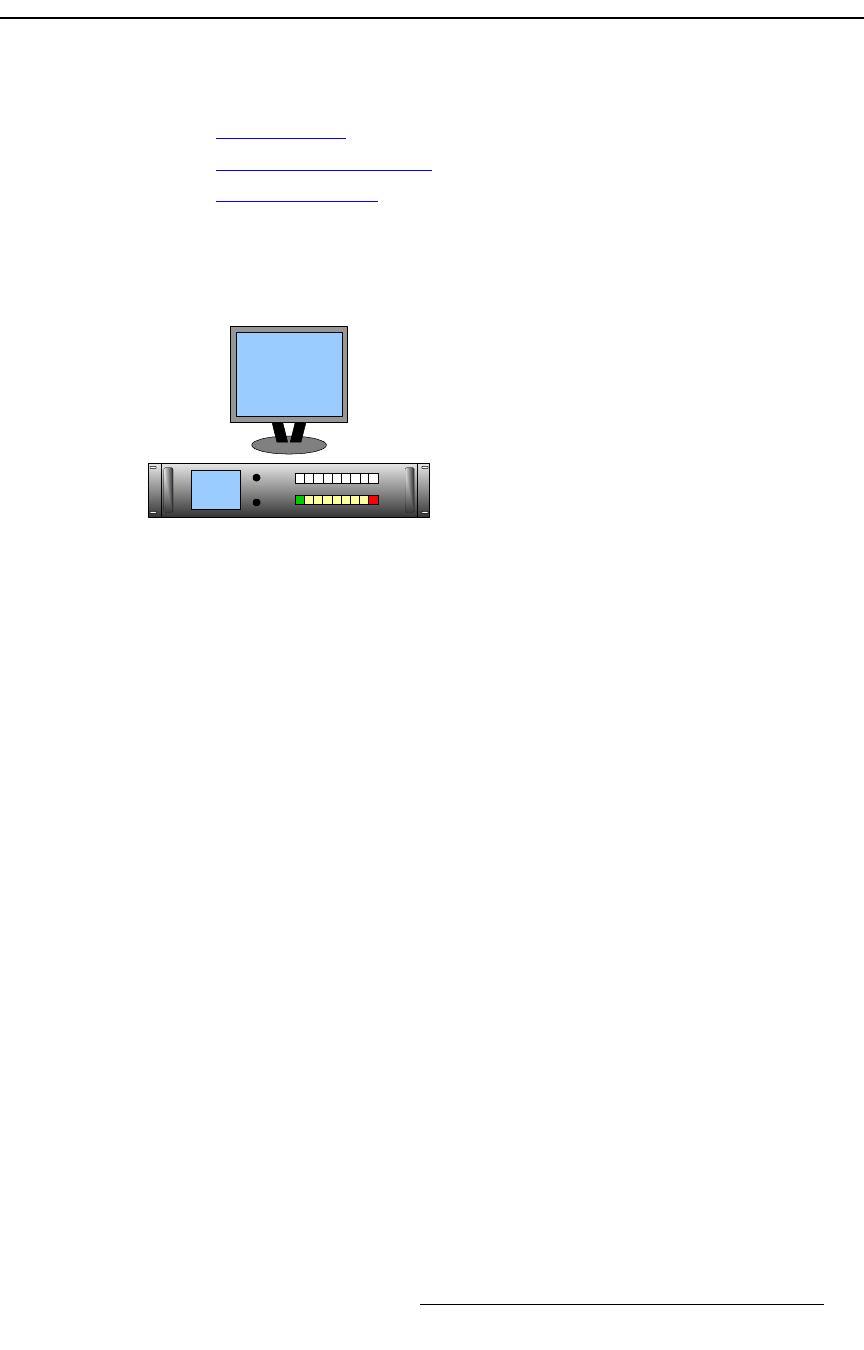
PresentationPRO-II • User’s Guide 101
6. Operations
Operational Configuration
léÉê~íáçå~ä=`çåÑáÖìê~íáçå
The following topics are discussed in this section:
• Monitor Layout
• Touch Screen Calibration
• A Word About LOS
jçåáíçê=i~óçìí
Use the following diagram as a recommended layout for your monitor.
Figure 6-1. Application Layout
For optimum viewing and utility, place your Program monitor in close proximity to the
chassis, either above or immediately to the right.
qçìÅÜ=pÅêÉÉå=`~äáÄê~íáçå
As an excellent prerequisite to all operating procedures, it is recommended that you
calibrate the Touch Screen.
Use the following steps to calibrate your Touch Screen display:
1. If required, press {HOME} to display the Home Menu.
2. Press {DISPLAY} to show the Display Settings Menu.
3. Press {LCD CAL} to display the first Touch Screen Calibration Menu.
4. Follow directions on screen to complete the calibration procedure.
^=tçêÇ=^Äçìí=ilp
On rare occasion, you can experience LOS (loss of signal) — typically due to a poor video
or computer connection. In these cases, PresentationPRO-II obeys a precise set of rules:
• Scaler LOS — If there is a LOS for a video signal inside a scaler (PIP or KEY),
the video switches to black, but the scaler remains in its current size and position.
• Background LOS — If there is a LOS for the background DVI input, the video
switches to the background’s selected matte color.
• DSK LOS — If there is a LOS for the DSK, the system switches the DSK Off
(specifically, selecting "
none" as the type).
In each case, when the video signal recovers, the system re-enables it as before.
Program
